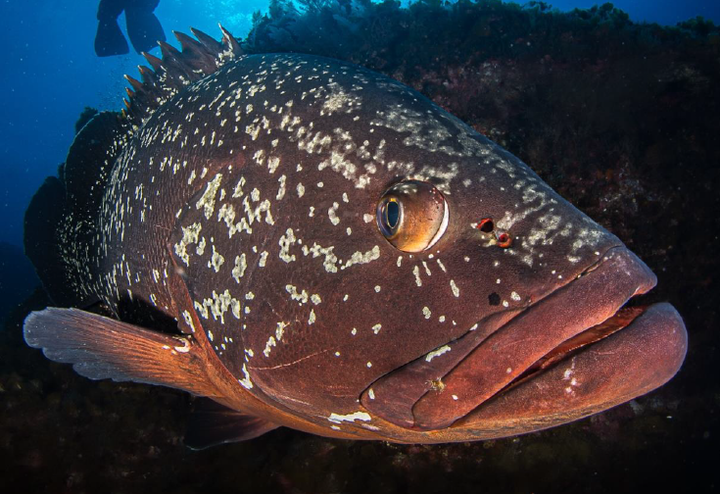MPA Islas Hormigas (ES)
 Dusky grouper (Epinephelus marginatus) tracked at the MPA at Islas Hormigas. Photo by Javier Ferrer & V.M. Giancalone.
Dusky grouper (Epinephelus marginatus) tracked at the MPA at Islas Hormigas. Photo by Javier Ferrer & V.M. Giancalone.
This project aimed at increasing our understanding of dusky groupers and at developing protocols enabling improved interpretations of activity data from wild fish obtained through simultaneous use of acoustic telemetry and acceleration data loggers. The study was conducted at the marine reserve of Cabo de Palos – Islas Hormigas; home for a high abundance of large dusky groupers (Epinephelus marginatus) (and one of the best Mediterranean diving spots). Dusky grouper was chosen as model species for this project, as it, besides being a very important species from both ecological and economic perspectives, is highly sedentary and thereby allowed nearly continuous tracking of the fish within the hydrophone array. The study successfully allowed creation of a protocol to synchronize devices of such a different nature as acoustic transmitters and accelerometers, to understand which variables of acoustic telemetry can be used to infer activity in dusky groupers, and to assess the influence of recreational diving on the activity patterns of groupers. Through the use of high-resolution telemetry, the design of this study allowed incorporation of the spatial dimension in the context of combining acoustic telemetry and accelerometer data storage tags.
Project Partner